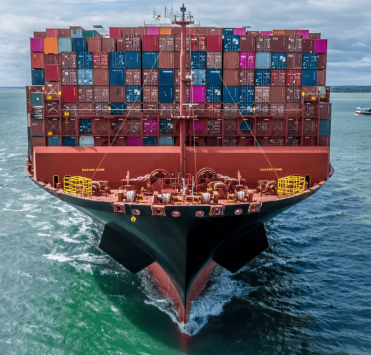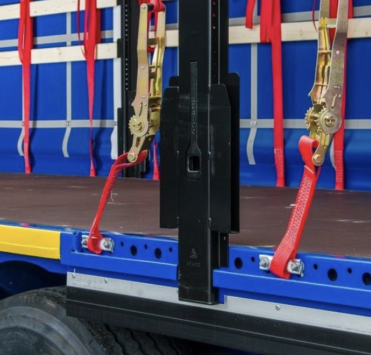Rules of transportation oversized cargoes

Transportation of oversized cargo from Europe to Ukraine is a complex process that requires detailed preparation and compliance with regulatory requirements. Oversized cargo differs in non-standard dimensions and weight, which complicates its transportation. In this article, we will examine the key features of transporting oversized cargo, including the rules for obtaining permits, safety issues, and selecting the right transport.
What is oversized cargo?
Oversized cargo refers to objects whose dimensions exceed the standard parameters set for transportation on public roads. According to European and Ukrainian legislation, standard road dimensions are limited to a length of up to 13.6 meters, a width of up to 2.45 meters, a height of up to 3 meters, and a weight of up to 40 tons. If the cargo exceeds these dimensions or weight, special permits are required for its transportation.
Categories of oversized cargo
Oversized cargo can include various types of objects:
- Construction equipment: cranes, excavators, bulldozers, and other large-scale machinery.
- Industrial equipment: machines, generators, and other mechanisms for industrial enterprises.
- Energy objects: wind turbines, solar panels, and transformers.
- Metal structures and infrastructure elements: bridge structures, beams, and building blocks.
Key challenges of transporting oversized cargo
Transporting oversized cargo presents several challenges:
- Route planning: Due to the large size of the cargo, it is crucial to carefully plan the route to avoid sections with narrow roads, bridges, and tunnels. Both the height and width of the cargo, as well as the infrastructure of the countries along the route, must be considered.
- Time restrictions: In some European countries and Ukraine, there are restrictions on the movement of oversized cargo during certain hours, weekends, and holidays, which can affect delivery timelines.
- Obtaining special permits: Transporting oversized cargo requires permits to be obtained in every country along the route. This applies not only to the cargo itself but also to the use of certain roads and bridges.
- Road safety: When transporting large loads, ensuring safety for both the cargo and other road users is crucial. Specialized equipment and escort vehicles are used for this purpose.
Let’s explore the key points to consider when transporting oversized cargo.
Cargo blueprint for detailed understanding of its dimensions
A cargo blueprint is an important document that helps logisticians and regulatory bodies understand the dimensions and characteristics of the object being transported. The blueprint allows for accurate route planning, selecting appropriate transport, and obtaining the necessary permits for transportation.
Main elements of the cargo blueprint:
- Exact dimensions: The blueprint should contain precise data on the length, width, height, and weight of the cargo. This helps assess whether the transport is suitable for the object and if it can be moved on standard roads. If the cargo has a complex shape, it's important to indicate the maximum points along each axis.
- Center of gravity: The blueprint often specifies the location of the cargo's center of gravity. This is important for properly securing and balancing the load on the platform, especially if the weight is unevenly distributed. Proper placement helps prevent shifting during transport.
- Type of packaging: If the cargo requires additional packaging or securing, the blueprint should include information on how the cargo will be secured. This may include indicating attachment points for straps, chains, or supports, as well as methods for positioning the cargo on the platform.
- Cargo features: If the cargo has protruding elements or specific characteristics (e.g., fragility, need for thermal insulation or protection from external elements), these details should also be indicated on the blueprint. For instance, transporting industrial equipment may require protection from moisture and dirt.
- 3D image: For complex-shaped cargo, such as construction equipment or infrastructure elements, it is important to create a 3D blueprint showing all protruding parts and construction features. This helps transporters and road services better understand how the cargo will be positioned on the platform and identify potentially problematic road sections.
Safety and securing the cargo
Properly securing the cargo is a key aspect of its safe transportation. Specialized straps, chains, and supports must be used to prevent the cargo from shifting or being damaged during movement. It’s important to correctly calculate the number of securing points based on the weight and shape of the cargo.
- Straps and chains: Used to securely fasten the cargo to the platform.
- Supports and pads: Used to distribute the weight across the platform and prevent damage.
- Insulation: Special coverings may be used to protect the cargo from weather conditions such as rain or frost.
Selecting transport for oversized cargo transportation
The following types of vehicles are used to transport oversized cargo:
- Low-bed trailers: Platforms with a low center of gravity, ideal for transporting heavy machinery and equipment.
- Extendable platforms: Used for transporting long objects such as bridge structures.
- Modular systems: Used to transport extremely heavy objects such as turbines or transformers. These systems consist of several axles, each of which can be independently controlled.
Convoy organization and its main functions:
- Warning other road users: Escort vehicles (known as pilot cars) drive ahead and behind the vehicle carrying oversized cargo. They are equipped with signal lights, and often display information signs indicating the cargo’s dimensions. This allows other drivers to prepare in advance, reduce speed, and, if necessary, yield the road.
- Coordination with road services: The convoy often includes vehicles from the local road police, especially if the route passes through populated areas or busy highways. The police can temporarily block roads or restrict traffic on certain sections to ensure the safe passage of oversized cargo.
- Monitoring road conditions: One of the convoy vehicles may act as a road observer. It checks road conditions in advance, identifying narrow sections, bridges, and tunnels, as well as monitoring weather conditions. If obstacles are found, the convoy adjusts the route or takes the necessary measures to overcome them.
- Maintaining safe speed: The convoy helps maintain the optimal speed for the vehicle carrying the oversized cargo. This is especially important on narrow roads or sections with heavy traffic, where sharp maneuvers and braking, which could cause cargo displacement, should be avoided.
In most cases, a convoy is mandatory when transporting cargo that exceeds the legal dimensions and weight. For example, for cargo wider than 3 meters or heavier than 40 tons. Escort may also be required on challenging sections of the route, such as city streets, narrow roads, bridges, or tunnels.
Transporting oversized cargo from Europe to Ukraine requires thorough planning, compliance with legislation, and the use of specialized transport. The key aspects of successful delivery are proper route selection, obtaining permits, ensuring safety, and reliable cargo securing. Considering all these factors, safe and timely transportation of large and heavy objects can be organized.









